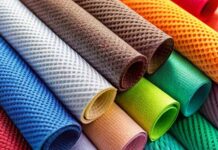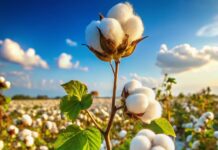In recent years, digital textile printing has transformed how textiles are produced, offering a blend of speed, efficiency, and cost-effectiveness. This technological evolution has sparked significant interest across various sectors, from fashion to home decor.
With advancements in printing technologies, businesses can now create vibrant, high-quality designs on fabric with ease. Key innovations, such as improved printing heads and more efficient inks, have made it possible to produce intricate patterns quickly and at a fraction of traditional costs.
These developments not only enhance production efficiency but also open new possibilities for creativity and customization in textile design.
High-Speed Printing Machines
Overview of Technology
The evolution of high-speed printing machines has revolutionized the digital textile printing industry. These machines utilize advanced technologies such as precise inkjet heads and automated fabric feeding systems, which allow for rapid printing without sacrificing quality. High-speed printers are equipped with multiple nozzles working in unison, enabling them to cover larger surface areas in shorter periods. This technology leverages digital data to manage complex designs with ease, ensuring consistency and detail in every print.
Impact on Production Speed
High-speed printing machines have dramatically improved production speed by minimizing manual interventions and setup times. Traditional textile printing methods often required extensive preparation and lengthy drying times. In contrast, modern digital printers can execute elaborate designs in a fraction of the time. This increase in speed means that manufacturers can meet tight deadlines and respond more quickly to market demands, providing significant advantages in the competitive textile industry.
Cost Savings and Efficiency Gains
The efficiency of high-speed printers translates directly into cost savings. By reducing labor hours and material waste, manufacturers can lower production expenses. Digital printing processes eliminate the need for costly screens and plates used in traditional methods, further saving resources. Additionally, the precision of high-speed machines reduces errors and the need for reprints, maximizing the yield from every production run. These factors culminate in a more cost-effective production process that benefits both manufacturers and consumers.
Improved Ink Formulations
Development of Eco-Friendly Inks
The development of eco-friendly inks has been a significant advancement in digital textile printing. These inks are composed of water-based and non-toxic components, lowering their environmental impact. Eco-friendly inks fulfill the demand for sustainable practices in the textile industry, reducing reliance on harmful chemicals and enabling safer disposal. Furthermore, regulations and consumer preferences for environmentally responsible products have driven the innovation of inks that are both high-performing and sustainable.
Enhanced Color Vibrancy and Durability
Improved ink formulations have also made strides in achieving enhanced color vibrancy and durability. Modern inks are engineered for superior color depth, creating vivid and eye-catching prints. The durability of these inks ensures that the colors withstand washing and wear, maintaining their appearance over time. This attribute is crucial in affirming the quality and longevity of digitally printed textiles, making them suitable for a broad range of applications from fashion to home decor.
Reduction in Production Costs
In addition to their environmental benefits and aesthetic enhancements, improved ink formulations contribute to cost reductions in production. The efficacy of these inks means that less ink is required per print, thereby lowering the amount needed to complete a design. Also, the longevity and quality of prints reduce returns and dissatisfaction, optimizing production cycles and resource allocation. This ultimately leads to a more streamlined and economical production process, making digital textile printing increasingly attractive and viable in the modern market.
Advanced Software Solutions
Automation and Workflow Optimization
One of the significant leaps in digital textile printing is the implementation of advanced software solutions that focus on automation and workflow optimization. Modern software is designed to automate repetitive tasks, which dramatically reduces production times and minimizes human error. This automation enables printers to handle multiple jobs simultaneously, ensuring a smooth flow of operations from inception to completion. Software tools can also manage color consistency and precision, further enhancing the quality of the final product.
Integration with Design and Production Systems
The integration of design and production systems through software platforms represents another substantial advancement. These systems enable seamless communication between design teams and production units, ensuring that digital files are translated accurately into printed textiles. By using integrated CAD (Computer-Aided Design) programs, manufacturers can efficiently manage resources, materials, and timelines, reducing overhead costs and preventing production delays. This integration streamlines operations and aligns the creative and manufacturing processes, leading to more cohesive project outcomes.
Influence on Customization Capabilities
Advanced software solutions also significantly enhance customization capabilities, allowing for greater innovation in textile design. With improved software, designers can easily modify patterns, colors, and textures, providing customers with highly personalized products. These capabilities cater to the growing demand for bespoke designs in fashion, home décor, and other sectors. By facilitating on-demand production, manufacturers can maintain lower inventory levels, tailor products to specific consumer needs, and rapidly respond to market trends, achieving cost-effective and efficient production cycles.
Conclusion
Advancements in digital textile printing technology are revolutionizing the industry by enabling faster and more efficient production at reduced costs. Breakthroughs such as enhanced digital printing heads, improved pigment inks, and the integration of AI-driven solutions are pivotal in reducing production times and material wastage. Additionally, the shift towards eco-friendly solutions not only lowers costs but also appeals to environmentally conscious consumers. These innovations collectively point to a future where digital textile printing is both sustainable and economically viable.






























